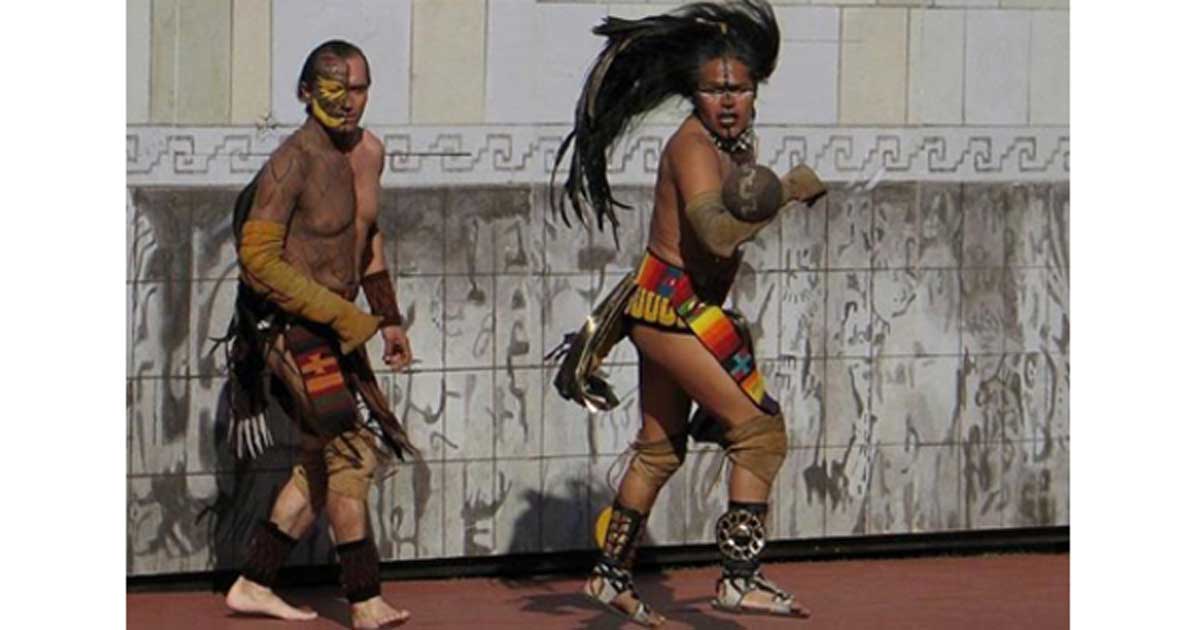3,000-Year-Old Ball Game Where Winners Lost Their Heads Is Revived in Mexico
In order to commemorate and honor Mexican heritage, teams from Mexico and Belize competed against each other in a three millennia-old game known as Ulama. The game took place in the ancient Mayan city of Teotihuacan in April, 2017, gathering a large crowd of fans cheering and celebrating their ancient Mesoamerican roots.
The “Resurrection” of the Most Ancient Team Sport in History
In Mexico, local organizers have been trying for over a decade now to revive an ancient Mesoamerican ball game because of its cultural and religious significance for the people of Central America. As BBC News reports, Ulama is considered to be the oldest known team sport in the world since it was played by the ancient Mesoamerican cultures of Central America nearly a thousand years before the establishment of the first ancient Olympic Games in Greece. The game was played for almost 2,500 years before being banned by the Spanish invaders.
Ulama: The Deadly Sport of the Ancient Americas
As Bryan Hill reports in a previous Ancient Origins article, this athletic event was not just a game for the ancient peoples, but a major part of Mesoamerican culture played by the Olmec, Mayan and Aztec civilizations. According to ancient texts Ulama was viewed as a battle between the sun against the moon and stars representing the principle of lightness and darkness (and possibly the battle between good and evil). Additionally, the motion of the ball symbolized the rotation of the sun for the Aztez, Olmeca and Mayan people.

Ball player disc from Chinkultic, Chiapas (CC By 2.0)
To the Mayans, the game was known as Pok a Tok, to the Aztec it was Tlachtli, while nowadays most people refer to it as Ulama. Believed to have extended as far south as Paraguay and north into present day Arizona, the earliest known Mesoamerican ball court is Paso de la Amada in Mexico, which has been radiocarbon dated to around 3600 years old. Nearly 1,300 Mesoamerican ball courts have been found to this day and it is estimated that every Mesoamerican city of antiquity had at least one. The Olmec courts were the size of a modern day football field and when seen from an aerial view, looked like a capital “I” with two perpendicular end zones at the top and bottom. They were lined with stone blocks and played on a rectangular court with slanted walls. These walls were often plastered and brightly painted. Serpents, jaguars, raptors were depicted alongside images of human sacrifice suggesting a connection to the divinity.
And still, more discoveries are emerging. In June, 2017, archaeologists announced the discovery of important remains of a significant Aztec temple and a ceremonial ball court in downtown Mexico City, and in September, 2017, archaeologists deciphered two 1,300-year-old stone panels that depict ancient Mayans playing with large balls while carrying impressive fans. The panels were found at the archaeological site of Tipan Chen Uitz in Belize and, according to the experts, date back to 700 AD.

The ball game court of Chichen Itzá (CC by SA 3.0)
The exact rules of the game are unknown since the evidence available is garnered from the interpretations made from sculptures, art, ball courts, and glyphs. From the available archaeological finds, however, historians estimate that the large rubber ball used could weigh up to three to eight pounds and had a diameter around 25 to 37 centimeters (10 to 12 inches). This was about the size of a basketball except that the ball was more solid on the inside (weighing much more), often resulting the death of players when it hit them in the wrong place. For that reason and to prevent severe injuries or death, players eventually began wearing equipment.
The most interesting part, however, is the fact that if a particular game had a religious purpose, the winning team were decapitated and offered as a sacrifice and this was considered a great honor. And that’s not just speculation. Various illustrations included in Pre-columbian books such as the Codex Borgia and on carved stone friezes decorating the walls of ball courts at the sites of Chichen Itza and El Tajin, clearly portray the decapitation of one team’s captain by the other or by a priest.

Small detail of a reproduction of a mural at the Tepantitla complex of Teotihuacan depicting a ball player (CC by SA 2.0)
Ulama in the modern day
Fortunately for the players who are willing to play the modern form of the game today, Ulama’s rules have softened up drastically compared to the ancient game’s deadly practices. The game is played by teams of seven players, who try to pound a heavy solid rubber ball up and down an arrow pitch, using their hips. Modern Ulama could be described as an equivalent sport to soccer but with the main difference being that the players are only allowed to use their hips instead of their feet. When one team fails to keep the ball within the playing field then the opposing team earns a point.
However, the significance of the revival of this ancient game shouldn’t focus on how successful a tournament is or which team wins the most games, but instead on the rich culture and ancient origin of the game, “What I want is for us Mexicans to realize that we have much richness (in our culture), as much as in arts, crafts, and sports, and we ought to be proud because we are the first country in the world to have a ballgame," told Telesur organizer Armando Osorio, pointing out this way that participating alone can be very beneficial for all of those who want to learn more about their history and culture.
The 2017 tournament was only the second since 2006, with ten teams from across Mexico taking part in the tournament.
Top image: Modern day Pok-ta-pok players in action (CC by SA 2.5)



















